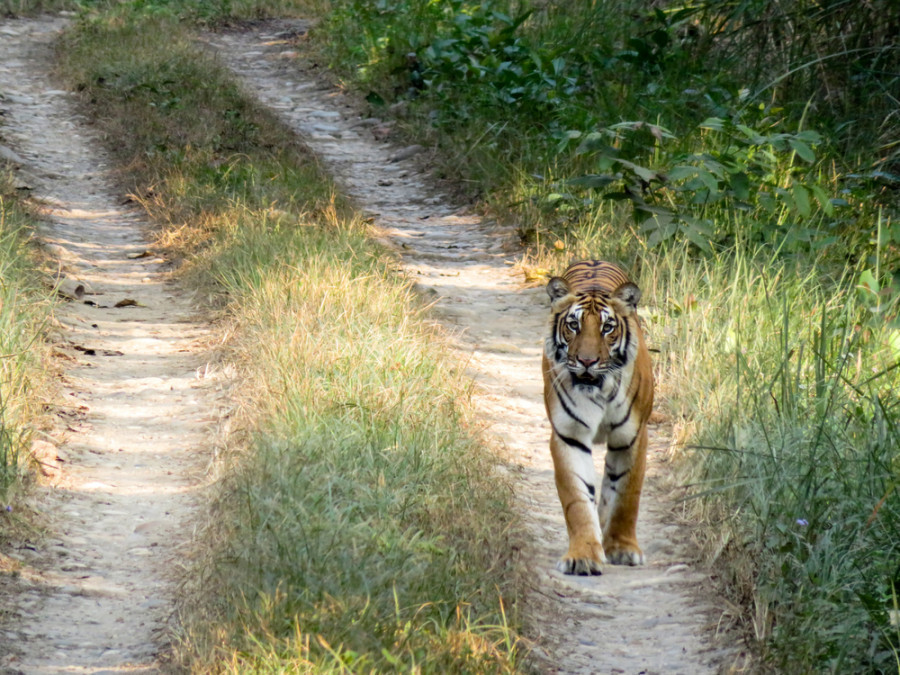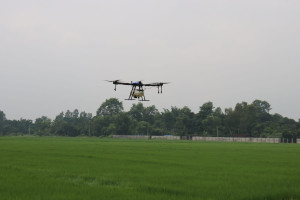Editorial
Coexistence over conflict
While blaming tigers for human fatalities is easy, our flawed concept of conservation is the culprit.
In 2022, when Nepal’s Bardiya National Park (BNP) won the TX2 award for doubling its tiger populations since 2010, our conservation efforts were globally lauded. The country was the first to surpass the target among other nations committed to doubling their tiger number by 2022. However, in between the praises, the escalating human-wildlife conflict evinced by the human deaths due to frequent tiger attacks were unaddressed. When the dark side of the success story became apparent, some blamed the locals for entering the restricted forests, while others pointed at the increased tiger population.
In an event organised to review COP29 outcomes last year, Prime Minister KP Sharma Oli claimed that the current number of tigers is excessive and that having only 150 would be enough for the country. He also proposed sending surplus tigers to other nations as gifts. Meanwhile, locals near the parks and forest corridors continue to live in perpetual fear of tigers.
Over the past five years, tiger attacks have claimed 36 lives in Bardiya. This aligns with the rise in the tiger population, as there were no recorded human fatalities from tiger attacks in Bardiya in the decade before 2019. In 2009, there were only 18 Bengal tigers in Bardia National Park. However, the 2018 census revealed 87 of these endangered species. Between the fiscal year 2020-21 and mid-March of the current fiscal year, wildlife attacks have claimed the lives of 53 people, with tigers responsible for 36 of these deaths.
While it is easy to blame the increase in tigers for human fatalities, experts believe the issue is our flawed concept of conservation. Humans and wildlife have coexisted for long, but various factors have converged habitats and resources, making coexistence increasingly challenging. Many communities near the parks and forest corridors depend on the forests for livelihood. They have developed years of knowledge and skills to harness these resources for survival. Similarly, tigers are also getting closer to humans due to the expansion of human settlements and lack of prey. Further, prolonged droughts that extend beyond the usual dry season also drive tigers into settlements in search of water. A 2021 report by Dialogue Earth revealed how the decline of the water level of Geruwa River, which forms the western boundary of BNP and is a vital water source for wildlife, might be linked to tigers entering nearby settlements.
Although controlling problem tigers that stray from their habitat and kill humans is challenging as there isn’t enough space for captivity, allowing sport hunters to kill them, as proposed by the environment minister in 2022, is inhumane. Focusing on increasing the number of wildlife only to get international accolades is not conservation either. We need to ensure they can thrive without being a threat to the locals and their livelihood. As human activities in the forest areas, like cattle grazing, firewood gathering, and so on, are among the major reasons for tiger attacks, the government must provide these communities with alternatives for sustenance.
India also achieved its 2010 goal of restoring the tiger population by 2022. However, the country continues to struggle with frequent human fatalities from tiger attacks. Although 45 percent of tiger habitat in India is shared with people, the country remains committed to tiger conservation—perhaps our leaders could learn from their approach.
A way out must be worked out for humans and wildlife to coexist, for instance by establishing zoos in every province to rehabilitate problem tigers. Collaboration can be explored with neighbouring countries to expand and connect protected areas. Conservation must be reimagined to include people as active participants rather than opponents and victims.




 16.12°C Kathmandu
16.12°C Kathmandu














